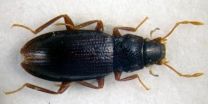(Press-News.org) The strength of sun cream recently recommended by the National Institute for Health and Clinical Excellence (NICE) to stave off sunburn is far too low and "not in the interests of public health," warns the Drug and Therapeutics Bulletin (DTB).
NICE should rethink its advice, and soon, it says.
NICE recommends sunscreens with a sun protection factor, or SPF, of 15 as sufficient to prevent sunburn and the subsequent potential risk of skin cancer.
But DTB says that this is based on standard test conditions in which manufacturers apply 2 mg/cm2 of product to the skin.
"In reality .. people using sunscreens typically apply much less than this and get no more than half, at best, of the protection indicated by the labelled SPF," says DTB in its editorial on the subject.
Indeed, evidence presented in its evidence review shows that at the levels typically applied - between 1.5 mg to 0.5 mg/ cm2 - a maximum sunscreen with an SPF of 50 will only afford an SPF of between 19 and 3.
To meet the NICE recommendation, a single application for an adult would require 35 ml of sunscreen, and if applied every two hours, as NICE also recommends, would use up a standard 200 ml bottle every two to three days, DTB points out.
This is impractical and expensive, and the conditions under which sun creams are tested should be changed to more accurately reflect the way people actually use these products, argues DTB.
The SPF refers to the amount of UVB (short wave sunlight which is the main cause of sunburn) protection afforded by a product. And in the UK, sunscreens often carry what has come to be referred to as the "Boots star rating system," which indicates the ratio of UVA (long wave) and UVB protection.
More stars mean more UVA protection, which makes up more than 95% of terrestrial UV radiation. But, cautions DTB, "a 5-star product at a lower SPF (say 15) could provide less UVA protection than a 3-star product at a higher SPF (say 30)."
"Products labelled with an SPF of 30 (together with a 4- or 5- star rating to indicate broad spectrum ultraviolent screening effect) will more reliably deliver adequate sun protection to most people who use sunscreens and would be sufficient to prevent sunburn under most circumstances. We believe this is what NICE should have recommended," says DTB.
Dr Ike Iheanacho, DTB editor comments: "In DTB's view, NICE's recommendation to use sunscreens with an SPF as low as 15 is a blunder that overlooks the key evidence and is not in the best interests of public health. This advice needs urgent review and correction."
The evidence in favour of sunscreen protection against two out of the three types of skin cancer, including the most dangerous - malignant melanoma, the incidence of which has at least tripled in the past 30 years - is also weak/equivocal, says DTB.
Nevertheless, if applied properly, sunscreen will prevent sunburn, and a history of sunburn is an important risk factor in the development of skin cancer. The evidence suggests that every five episodes of sunburn per decade add up to a threefold increased risk of developing malignant melanoma.
As summer approaches the DTB advice is therefore to:
Apply sunscreen (factor 30) to all areas that are not protected by clothing, including face, ears, and backs of hands
Pay particular attention to vulnerable areas, such as the nose, shoulders, tops of the feet, and back of the neck
Spread sunscreen evenly rather than rub it in
Re-apply after swimming or heavy sweating
Don't use sunscreen to prolong time spent in the sun
If you are fair skinned, go without sunscreen for 15 minutes two to three times a week only to ensure adequate supplies of vitamin D can be manufactured by the skin; those with darker skins need longer. The evidence shows that vitamin D from sunlight helps maintain strong bones and is associated with protection against some cancers and autoimmune diseases.
INFORMATION: END
Permanent hair dye gives the most serious adverse effects, yet there are also many reactions to facial and body moisturisers. This comes from the first report from the National Register of Adverse Effects from Cosmetic Products published by the Norwegian Institute of Public Health.
"The Register gives us a better overview of the products that cause adverse effects, the type of adverse effect and who experiences them. Then we can make an assessment and even warn against the use of certain products," says researcher Berit Granum at the Division of Environmental Medicine ...
Toronto – Not allowed to advertise your booze or smokes on a billboard?
That's okay. Research shows online advertising works especially well in places with government ad bans.
"If you want to regulate the offline world, you have to remember that people have access online too and you have to think about how that online world is going to mitigate the effects of your regulation," says Avi Goldfarb, a marketing professor at the University of Toronto's Rotman School of Management who co-wrote a study on the topic with Catherine Tucker of MIT's Sloan School of Management.
The ...
Boston, Mass. – Researchers at Children's Hospital Boston and Google.org have found web-based search data to be a viable source of information for early detection and monitoring of outbreaks of dengue, an emerging mosquito-borne virus found in tropical areas of the world. Because search data allows the capture of disease-related queries in near real time, it could help public health officials in the more than 100 countries affected by dengue respond more quickly to nascent epidemics.
A team from the Children's Hospital Informatics Program (CHIP), led by John Brownstein, ...
A European research team, with Spanish participation, has described two new beetle species measuring two millimetres in length. The coleoptera (beetles) were found in streams in the Pyrenees and Pre-Pyrenees mountains (from Gipuzkoa to Girona) and in the Sierra de la Demanda mountains (Burgos). Experts had previously thought that they belonged to another European species.
"These species, which have a restricted range, had been confused with another European species with a more extensive distribution (Hydraena saga) and so their independent evolutionary history was unknown", ...
MadCap Software, Inc. (http://www.madcapsoftware.com), the leader in multi-channel content authoring and a showcase company for Microsoft Visual Studio and Microsoft XPS, today announced that revenues for Q1 2011 have grown 41% over Q1 2010, continuing the profitability that the company has enjoyed since launching its flagship product Flare in 2006. In the wake of strong growth, MadCap has increased its cash and accounts receivable by 30% over the same period ending 2010. At the same time, MadCap continues to invest in resources by expanding headcount by 21% over the previous ...
Research from North Carolina State University shows that so-called biodegradable products are likely doing more harm than good in landfills, because they are releasing a powerful greenhouse gas as they break down.
"Biodegradable materials, such as disposable cups and utensils, are broken down in landfills by microorganisms that then produce methane," says Dr. Morton Barlaz, co-author of a paper describing the research and professor and head of NC State's Department of Civil, Construction, and Environmental Engineering. "Methane can be a valuable energy source when captured, ...
Bethesda, MD—Severe deficiency of the vitamins and minerals required for life is relatively uncommon in developed nations, but modest deficiency is very common and often not taken seriously. A new research published online in the FASEB Journal (http://www.fasebj.org), however, may change this thinking as it examines moderate selenium and vitamin K deficiency to show how damage accumulates over time as a result of vitamin and mineral loss, leading to age-related diseases.
"Understanding how best to define and measure optimum nutrition will make the application of new technologies ...
TORONTO, Ont., May 31—Female prisoners who did not participate in a drug treatment program after their release were 10 times more likely to return to prison within one year than other prisoners, a new study has found.
More than one-third of those women were sent back to prison within six months, according to the national study led by Flora Matheson, a medical sociologist at St. Michael's Hospital.
The findings, published in the June issue of the American Journal of Public Health, underline the importance of post-release treatment programs for prisoners with substance ...
What would it take to make a manned mission to Mars a reality? A team of aeronautical and textile engineering students from North Carolina State University believe part of the solution may lie in advanced textile materials. The students joined forces to tackle life-support challenges that the aerospace industry has been grappling with for decades.
"One of the big issues, in terms of a manned mission to Mars, is creating living quarters that would protect astronauts from the elements – from radiation to meteorites," says textile engineering student Brent Carter. "Currently, ...
In the online version of the New England Journal of Medicine, physicians and scientists in Heidelberg, Montreal, and Paris reported on the successful treatment of three young children who were suffering from a severe hemolytic-uremic syndrome (HUS) after an infection with enterohemorrhagic Escherichia coli (EHEC). The infections occurred in 2010. EHEC are the bacteria that cause the current wave of infections that have already claimed ten lives in Germany. The number of suspected and confirmed cases of EHEC has now reached 700.
Eculizumab has been approved in Germany ...


